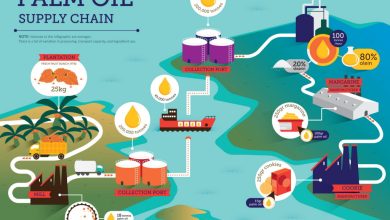In a fast-moving and complex business setting, the cohesiveness of the team becomes very important in reaching organizational goals. A cohesive team will be cooperative and efficient in communication for problem-solving, leading to greater productivity and job satisfaction.
One of the well-known frameworks for understanding and developing teamwork cohesiveness is “The Five Behaviors of a Cohesive Team,” built on the work by Patrick Lencioni, (Cohesive Team) which describes five imperative behaviors that teams have to master in order to function effectively.
When combined with insights from DISC analysis personality, teams can gain a better understanding of individual behaviors and dynamics that shall further enhance their cohesion. This blog aims to study the five behaviors of a cohesive team and the way they can be blended with DISC evaluation in developing a harmonious and high-performance teamwork setting.
The Five Behaviors of a Cohesive Team
1. Trust
A cohesive team is founded on trust. It implies that each member of the team ought to be vulnerable towards one another; in other words, they allow themselves to admit weaknesses and ask for help without the fear of being judged. Trust facilitates open and honest communication amongst team members, serving as a bedrock for proper collaboration.
You are building trust through the power of DISC Analysis.
The use of DISC analysis personality can help in the creation of trust within a team. If members know the various personality traits and different communication styles, they will appreciate each other’s attributes and possible weaknesses. For instance, when one is highly Dominant (D), he is considered assertive, upright, and confident. Still, when this trait is taken to the understanding level of being driven by results, it can build trust in taking charge in a place where much challenge exists.
2. Conflict
A cohesive team has to have some conflict—constructive conflict. This involves being able to debate and discuss as well as the aptitude to welcome different opinions and dig into them. All of these rise to the surface through enhanced decision-making and innovation.
Managing Conflict with DISC Analysis
It may help in conflict resolution by making clear the different approaches to conflict handling between the various personality traits. For example, people with a high Influence (I) trait mostly tend to avoid conflicts for the sake of peace. In contrast, those of high Conscientiousness (C) resolve using more logical and systematic reasoning. This helps the team members to know how to steer through a conflict and ensure the views of all members are properly listened to.
3. Commitment
Commitment within a team means that all members need to be directed and resolved toward common goals or decisions. Even by invitation and then debate and discussion, if there are any differences regarding decisions, the team’s individuals must commit to it and take it further from the right perspective.
Improving Commitment with DISC Analysis
Results from a DISC analysis can make team members more committed by making sure team members understand and feel they are valued. If the member perceives that their type of perception is included in the decision, they are more likely to commit to the goals established by the team. For example, a person high in Steadiness values stability and consensus. Assurance that an individual of such a kind perceives his need for harmony as being heard could improve his commitment to decisions reached by the team.
4. Accountability
It is about holding each other responsible for actions and performance. More so, this means everybody’s commitment to delivering quality work out of a willingness to stand performance issues constructively.
Building Accountability with DISC Analysis
It can foster accountability by pointing out the different ways in which team members may prefer to receive feedback. For example, a high D will want to receive feedback in a very direct and straight-to-the-point manner, while a high I will like feedback that incorporates positive reinforcement. (Cohesive Team) Knowing and understanding these preferences can help in implementing a feedback culture that supports accountability without resentment or defensiveness.
5. Results
The long-term result desired for a cohesive team is to achieve collective results. This means that team members of such a team would put the success of the team before individual success. Focus on results keeps the team on the same page and aligned with energy to execute in common directions.
Results-Oriented with DISC Analysis
The DISC analysis can also keep a focus on results by ensuring that the team uses the strength of each personality type. For instance, persons scoring high in Conscientiousness are often very detail-oriented and organized, so they become good at ensuring that the work presented by the team is correct and high-quality. By recognizing and using such strengths, higher levels of performance and results can be attained in the team.
Incorporating DISC Analysis with The Five Behaviors
One can further accelerate program results by harnessing the power of DISC analysis as a companion to The Five Behaviors of a Cohesive Team. Here is how:
Building trust
Trust through understanding: Apply the DISC analysis in helping team members understand one another, viz. their respective personalities and communication styles, in order to foster empathy, reduce misunderstandings, and consequently build trust.
Managing Conflict
Conflict through Clarity: Know how each of your team members resolves conflict by understanding the results of DISC analysis. Build strategies that respect these differences to foster productive conflict rather than destructive conflict.
Building Accountability
Accountability Feedback: Effective and Positive: Apply feedback methods based on the preferences of different personalities in DISC to make accountability more effective and positive.
Conclusion
The Five Behaviors of a Cohesive Team framework gives an effective model that can be used in building and maintaining high-performing teams. These would be attained through building trust, healthy conflict, commitment, accountability, focus on results, conversation, and cooperation. Combining that with the analysis of a person’s DISC personality type would even make it better. An understanding of the behaviors and communication styles of every individual revealed by DISC would, therefore, mean that teams can understand and develop from their varied strengths. When combined, the organization can build a united and performing team, having all it would require to achieve the set goals and fuel success.




